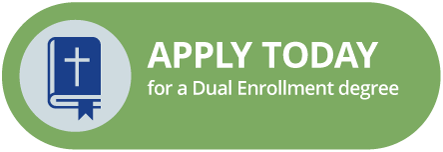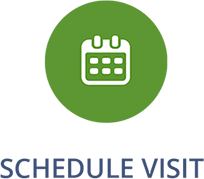As high school students prepare for college, many consider dual-enrollment programs. Dual-enrollment classes enable high school students to take classes at a local college with the goal of earning college credit and experiencing the college atmosphere before making the commitment to undergraduate studies.

There are numerous benefits to dual-enrollment programs. These programs introduce high school students to the demands of college coursework early on by highlighting the required skills of self-motivation and diligence that are needed for success within the rigors of college life. Recent studies have even shown that students who are involved in dual-enrollment programs are more likely go on to get a college degree.
Read more about Great Lake's dual enrollment program here.
Why should you consider getting involved with dual-enrollment?
“In theory, dual enrollment programs (along with programs like Advanced Placement and International Baccalaureate) benefit students in at least two crucial ways. First, by getting college credits out of the way inexpensively (and often for free), students enter college needing to earn fewer credits in order to graduate on time. Second, the exposure to more difficult coursework in a post-secondary-type setting may better prepare students mentally for the rigors of college-level coursework.”
--D. Derek Wu of Ithaka S+R, a not-for-profit service in New York that helps the academic community navigate economic and technological change
Ability to take classes not offered in high school
It is hard to make a decision about what major to pursue in college if you haven’t been exposed to a variety of classes to nurture and clarify your interests. Students can explore fields of study that help them choose a major later. At the same time, students earn credits from various fields that can be applied to a degree without the pressure of remaining on a college graduation track. Dual-enrollment gives students insight into college coursework while they are still in a regular high school environment. Dual-enrollment can help students explore their options and receive valuable guidance from college advisers.
“I think it’s important to recognize that as we increase the numbers of students going on to college, we also need to be focusing on college success and getting a few of these courses under your belt has a very significant impact on your academic momentum.”
--Adam Lowe, executive director of the National Alliance of Concurrent Enrollment Partnerships, the sole accrediting body for concurrent enrollment partnerships.
Dual Enrollment is Cost-effective
In many cases, there is no tuition charge for high school students participating in the dual-enrollment program. This is an invaluable benefit as the rising costs of higher education can be cause for concern. Other programs might involve a smaller tuition fee, although it is often highly discounted from what students will pay after graduating from high school. Generally, high schools are financially responsible in overseeing dual-enrollment programs. Many colleges even offer tuition discounts and/or scholarships specifically for dual-enrolled students.
Becoming College-Ready
Students are likely to be better prepared for their first year of full-time college when they are involved in dual-enrollment programs. It makes it easier to adjust to the increased demands of college-level courses.
Getting core college courses/general education requirements—such as introductory English and Math classes—out of the way in high school allows for more wiggle room in a student’s full-time college schedule for classes specific to a major.
The following skills are all essential understandings for any student going into college:
- syllabus navigation
- advocating for yourself to your professor
- understanding the college coursework schedule
“88 percent of dual-enrollment students who took community college courses in high school continued in college after high school, and most achieved a degree or transferred within six years.”
– from a study by Community College Research Center at Columbia University's Teachers College and the National Student Clearinghouse Research Center (September 2017)
The Wrap Up
Dual Enrollment gives students the opportunity to get a head start on their college careers. In many ways, it prepares them for success in their pursuit of higher education. Dual-enrollment is a practical option for many high school students looking ahead to college. There is some real evidence that dual-enrollment is in fact an effective strategy for helping students make a better transition into college.
Interested in Dual Enrollment? Apply Today!





